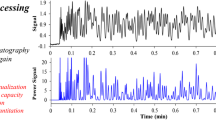Abstract
This paper focuses on the relative standard deviation (RSD) of measurements obtained by the integration of noisy data in both Monte Carlo simulation and HPLC experiments. No peak overlap is considered. As the integration domain, T, which is symmetrical around the peak center is increased up to ten times the width, o(SD), of a Gaussian peak, the integration over the peak has a minimal RSD at T=(— 1.4σ, +1.4σ) in the measurement model where the white noise is the only error source. This optimal integration domain, if described as T/σ=(—1.4,+1.4) in the scale of width, is shown to be independent of the entire peak area, width and noise level. Similar results are obtained by the Monte Carlo simulation for skewed Gaussian peaks and by differentiating the RSD of a triangle signal with respect to the integration domain. The probability theory proposed here exactly predicts the RSD observed by the simulation for the integration of the Gaussian and non-Gaussian peaks. Although a minimal RSD is not evident in the HPLC data for some aromatic compounds, an important property of the model integration is retained in a trace analysis: the precision of the integration around the optimal domain (e.g., ±1.5σ) is superior to that over a wide domain (e.g., ±4σ).
Similar content being viewed by others
References
N. Dyson “Chromatographic Integration Methods”, Royal Society of Chemistry, Cambridge, 1990.
L. R. Snyder, J. Chromatogr. Sci., 10, 200 (1972).
J. P. Foley J. Chromatogr., 384, 301 (1987).
A. Westerberg, Anal. Chem., 41, 1770 (1969).
A. N. Papas and M. F. Delaney, Anal. Chem., 59, 54A (1987).
R. A. Day, Jr. and A. L. Underwood, “Quantitative Analyst”, Prentice Hall, New Jersey, 1991.
Y. Hayashi and R. Matsuda, Chemom. Intell. Lab Syst., 18, 1 (1993).
Y. Hayashi and R. Matsuda, Adv. Chromatogr., 34, 347 (1994).
Y. Hayashi, S. Yoshioka and Y. Takeda, Anal. Chim. cm, 212, 81 (1988).
R. D. B. Fraser and E. Suzuki, Anal. Chem., 41, 37 (1969).
Y. Hayashi and R. Matsuda, Anal Set., 5, 459 (1989).
Author information
Authors and Affiliations
Rights and permissions
About this article
Cite this article
Hayashi, Y., Matsuda, R. Influence of Integration Domain on Precision of Measurements in Liquid Chromatography. ANAL. SCI. 10, 553–559 (1994). https://doi.org/10.2116/analsci.10.553
Received:
Accepted:
Published:
Issue Date:
DOI: https://doi.org/10.2116/analsci.10.553




